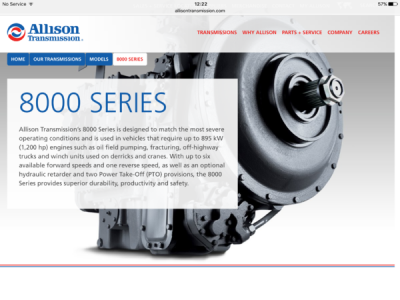Diesel engines of the type M-50 F-3 (12CHSPN 18/20)
Category:
Diesel engines
Diesel engines of the type M-50 F-3 (12CHSPN 18/20)
Next: Diesel type D6 (6CHSP 15/18)
Diesel M-50 F-3 (M-400) - four-stroke, V-shaped, twelve-cylinder, mechanically supercharged, high-speed marine engine with jet spraying of fuel. The models of right and left rotation are produced. The right-hand-side diesel differs from the left-hand drive diesel engine in appearance of the reversible coupling, supercharger, seawater pump, exhaust system, "as well as the location of the freshwater pump units and the oil-draining pump with the centrifuge. The arrangement of aggregates on diesel engines of the left and right rotation is mirror.
Diesel M-50 F-3 is designed for operation on high-speed vessels with underwater wings. On the ship of the type "rocket" one engine is installed, such as "meteor" - two and "satellite" type - four engines. The diesel is equipped with reversible couplings consisting of friction and gear clutches and providing rotation transfer from the diesel crankshaft to the propeller shaft (forward stroke), separation of these shafts (idling) and changing the direction of rotation of the propeller shaft (reverse gear).
The operating power of the forward stroke can vary depending on the destination within the range of 368-736 kw, with a corresponding change in the shaft speed within 1200-1640 rpm, maximum reverse power of 184 kW at 750 rpm and a service life of not more than 1 h .
Carter diesel engine is cast from aluminum alloy and consists of two parts. In the upper bearing part there are seven main bearing nests with inserts in which the crankshaft rotates. The detachable steel liners are covered with lead bronze and are drilled along the shafts. The working surface of the liners is covered with a lead-tin alloy. Located at an angle of 60 ° platform top of the crankcase serve to install two six-cylinder units.
The crankshaft is made of alloy steel subjected to nitriding. It has six knees located
pairwise in three planes at an angle of 120 ° to each other. The connecting rod and the neck are connected by round cheeks. A spring shock absorber is attached to the rear flange of the crankshaft, which reduces the unevenness of the torque with variable loads. On the crankshaft of the diesel engine, six main and six trailing connecting rods are hung.
The I-wire rods are made of alloy steel.
The top heads of the main and trailing connecting rods are the same and have bushings made of tin bronze pressed into them. The lower head of the main connecting rod is detachable: the cover is attached to the main connecting rod by means of a wedge with two conical pins. In the lower head of the main connecting rod is installed a steel, leaded bronze liner, consisting of two halves. The trailing connecting rod is connected to the main connecting rod by means of a pin pressed into the eye of the main connecting rod.
Piston - stamped from aluminum alloy. The bottom of the piston has the shape of a combustion chamber of Hesselmann. The piston has grooves in which four piston rings are mounted, of which two (upper) are compression ones, and the remaining oil-removal rings. In the four depressions of the bottom of the piston are gas distribution valves. The piston pin is made of alloy steel, hollow, with a hardened outer surface, pressed into the piston lugs.
The cylinder blocks are six-cylinder, they are installed on the upper crankcase of the diesel engine and fixed to it with anchor bolts. Each cylinder block consists of a shirt, six cylinder sleeves and a head. In the upper part, the bushing has a shoulder, which it rests on the surface of the recess in the unit's jacket. The lower belt of the bushing of the cylinder is sealed with five rubber rings: four serve to seal the water cavity, and the fifth (lower) prevents the oil from seeping out of the cavity of the upper crankcase.


